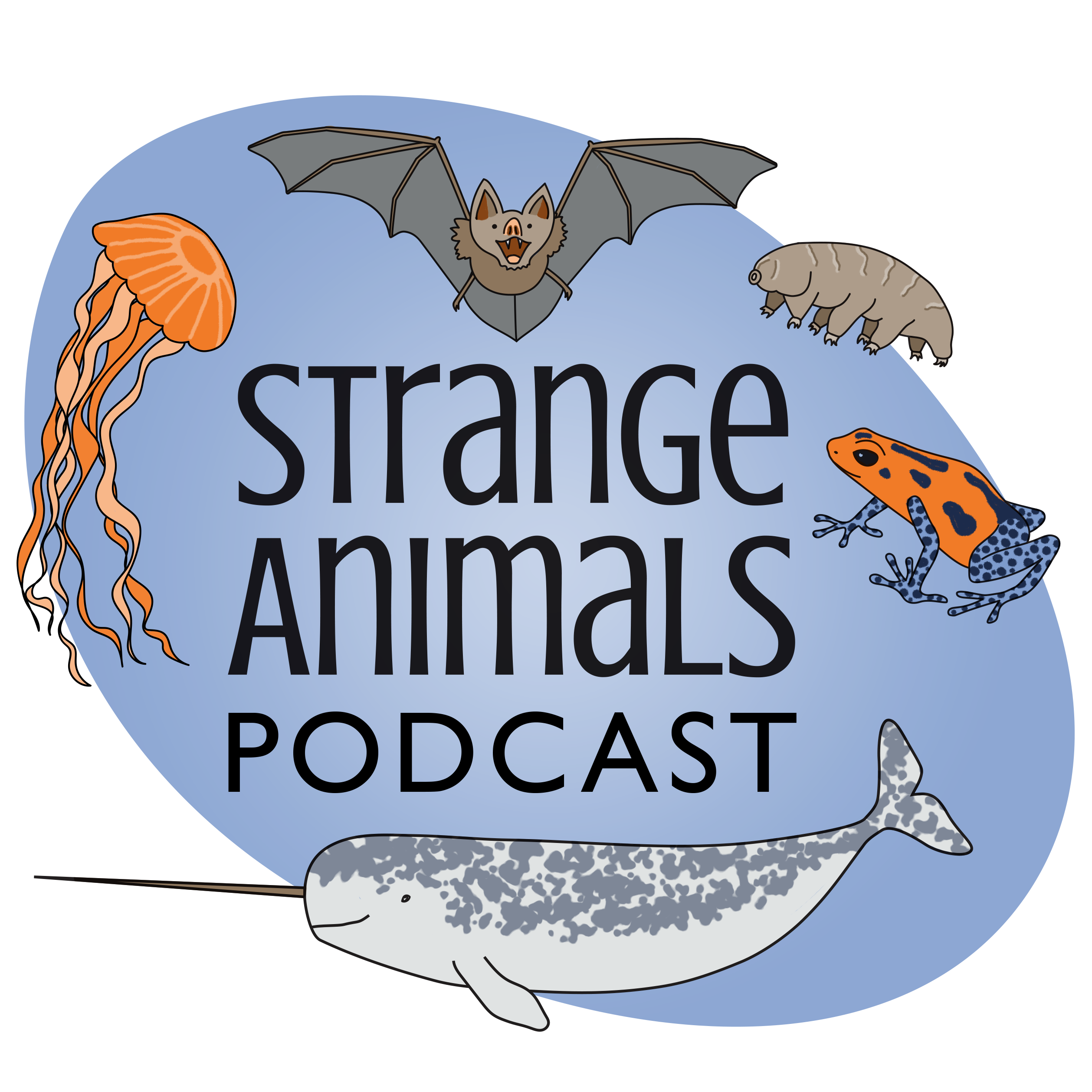Episode 379: Animals That Inspired Pokemon

Thanks to Pranav, Isaac, and an anonymous listener for their suggestions this week! Let's learn about some animals that inspired three Pokemon.\n\nSandshrew:\n\n\n\nPossible Sandshrew inspirations:\n\n \n\nDrowzee:\n\n\n\nPossible Drowzee inspiration:\n\n\n\nFennekin:\n\n\n\nUndoubted Fennekin inspiration:\n\n\n\nShow transcript:\nWelcome to Strange Animals Podcast. I\u2019m your host, Kate Shaw.\nThis week we\u2019re going to do something slightly different. At least two people and probably a lot more have suggested that we talk about some animals that were the inspiration for Pokemon, so I picked three that you might not know about. Thanks to Pranav and Isaac for their suggestions, and if you suggested the same topic at some point and I didn\u2019t write it down, thank you too! Thanks also to an anonymous listener who suggested three of the animals we\u2019ll talk about in this episode. I didn\u2019t intend to cover three animals suggested by the same listener but it worked out that way, which is kind of neat.\nSome of you may not be familiar with what Pokemon are. The word is a shortened version of the term \u201cpocket monsters,\u201d and it started as a video game where players catch various monsters and store them in little round cages called pokeballs. A lot of Pokemon are so cute you can\u2019t really call them monsters, but they all have different abilities and can evolve into even more powerful versions with enough training. My only real experience with Pokemon is the game Pokemon Go that came out in 2016, although I don\u2019t play it anymore, but the franchise has had multiple games, including a trading card game that is still really popular, TV shows, movies, and of course lots of toys.\nSometimes it\u2019s easy to figure out what animal inspired a Pokemon. Rhyhorn obviously looks like a rhinoceros, Magikarp looks like a goldfish, and so on. But sometimes it\u2019s not so obvious. Let\u2019s start with Sandshrew.\nSandshrew is a sandy-brown color on its back with a lighter belly and muzzle, and prominent claws. Its tail is big and its ears are small. It\u2019s covered with armor plates, and in some versions of Sandshrew, most notably the Pokemon TV show, it can curl up into a ball. What does that remind you of?\nSome of you just said \u201carmadillo\u201d and others of you just said \u201cpangolin.\u201d Both were suggested a while back by an anonymous listener. The two animals aren\u2019t related but they do share some physical similarities, like armored bodies and the ability to curl up into a ball to make their armor even more effective.\nWe talked about the pangolin in episode 65, about animals that eat ants. The pangolin is related to anteaters, and is sometimes even called the scaly anteater, but it\u2019s not closely related to the armadillo. Their similarities are mainly due to convergent evolution.\nThe pangolin is a mammal, but it\u2019s covered in scales except for its belly and face. The scales are made of keratin, the same protein that makes up fingernails, hair, hooves, and other hard parts in mammals. When it\u2019s threatened, it rolls up into a ball with its tail over its face, and the sharp-edged, overlapping scales protect it from being bitten or clawed. It has a long, thick tail, short, strong legs with claws, a small head, and very small ears. Its muzzle is long with a nose pad at the end, it has a long sticky tongue, and it has no teeth. It\u2019s nocturnal and lives in burrows, and it uses its big front claws to dig into termite mounds and ant colonies. It has poor vision but a good sense of smell. It\u2019s a good fit for Sandshrew and some species are even the same color as Sandshrew. It lives in southern Asia and much of sub-Sahara Africa, and all species are critically endangered.\nMeanwhile, the armadillo is also a mammal that\u2019s covered in armor except for its belly, but its armor is much different from the pangolin\u2019s scales. The armor is made up of bands of hardened, bone-like skin covered with scutes, which are tiny flattened knobs of keratin. Ordinary skin connects the bands so that the animal...